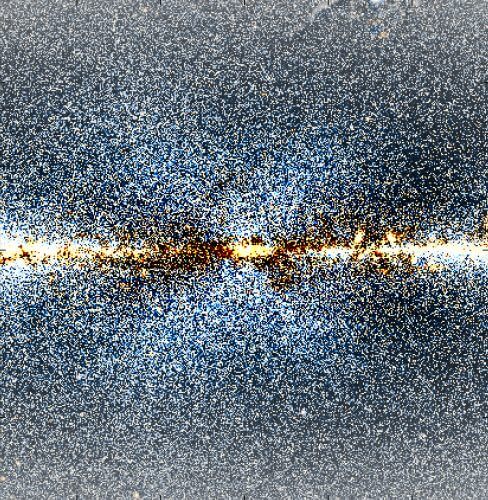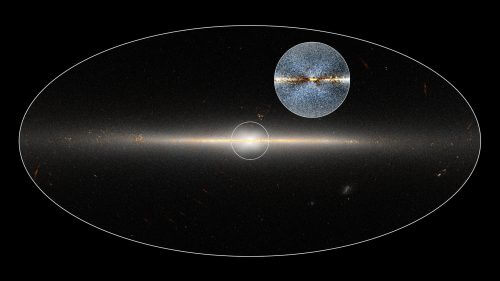The astronomers believe that the bulge could have been formed in two different ways: either it is a remnant of a merger of the Milky Way with other galaxies, or it could have been formed without external influences, like the long formation that itself is part of the disk of the developing galaxy. The finding supports the second model which predicts that the bump in the shape of a cube or a peanut looks like an X to us.

Two astronomers have uncovered the strongest evidence yet for the existence of a giant X-shaped structure made of stars within the central bulge of the Milky Way galaxy.
Previous computer models, observations of other galaxies, and observations of our own galaxy have shown that the X-shaped structure does exist but no one has observed it directly; The astronomers argued that previous studies that indirectly indicated the existence of the X could be explained in other ways.
"There has been controversy about whether the X-shaped structure exists," says Dustin Lang, a research associate at the Dunlap Institute for Astronomy and Astrophysics at the University of Toronto, and one of the authors of the paper describing the discovery. "But our study shows a good view of the core of our galaxy. I think he provided pretty good evidence for the existence of the X-shaped structure."
The study appears in the July issue of the journal Astronomy. The lead author is Melissa Ness, a postdoctoral researcher at the Max Planck Institute for Astronomy in Heidelberg.
The Milky Way Galaxy is a barred spiral galaxy: a disk-shaped collection of dust and gas and hundreds of billions of stars about 100,000 light-years in diameter. The structure is far from a simple disk structure, because it consists of two spiral arms, a long configuration that crosses the center of the galaxy, as well as a central bulge of stars. The central bulge contains a structure in the shape of the letter X, as an integral part of it, and this is due to our angle of view from the plane of the galaxy.
The astronomers believe that the bulge could have been formed in two different ways: either it is a remnant of a merger of the Milky Way with other galaxies, or it could have been formed without external influences, like the long formation that itself is part of the disk of the developing galaxy. The finding supports the second model which predicts that the bump in the shape of a cube or a peanut looks like an X to us.
The clearest look at the bulge emerged when Lange reanalyzed previously published data from the Wide-field Infrared Survey Explorer (WISE), a space telescope launched by NASA in 2009. Before its initial mission ended in 2011, it surveyed the entire sky in infrared light – billions of galaxies, stars and asteroids.
"The bulge is a key signature in the formation of the Milky Way galaxy," says Ness. "If we understand the bulge we will understand the central processes that created and shaped our galaxy."
The shape of the bulge as clearly seen from the WISE data proves that internal formation processes are responsible for its formation.
This provided proof that our galaxy has not experienced major merger events since the bulge formed. If this were to happen there would be interactions with other galaxies disrupting its shape.
Lang's analysis was originally intended to aid his research in mapping the web of galaxies beyond the Milky Way. To help research the maps he developed from the WISE data, he created an interactive navigation map of the whole sky and reported it in a tweet. "Ness read the tweet and immediately recognized the importance of the X-shaped building," says Lang. "We arranged to meet at an upcoming conference, the article was born from that meeting. This is the power of large surveys and open science!”


3 תגובות
Very nice.
Pretty !
It looks like a spin of two black holes whose spins are perpendicular to each other
The two intersecting lines of the X are the jets emitted from the adsorption rings of the two black holes.
This suggests that the Milky Way galaxy formed from the merger of two ancient galaxies.
The X-magnitude gives an indication of the old age of the galaxy, when it merged.